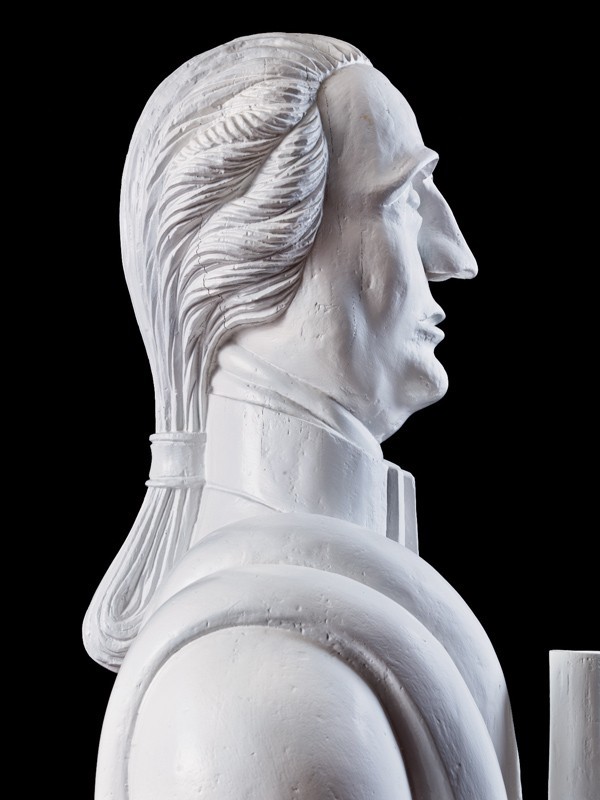
Detail of the sculpture of George Washington illustrated in fig. 9. (Photo, Gavin Ashworth.)
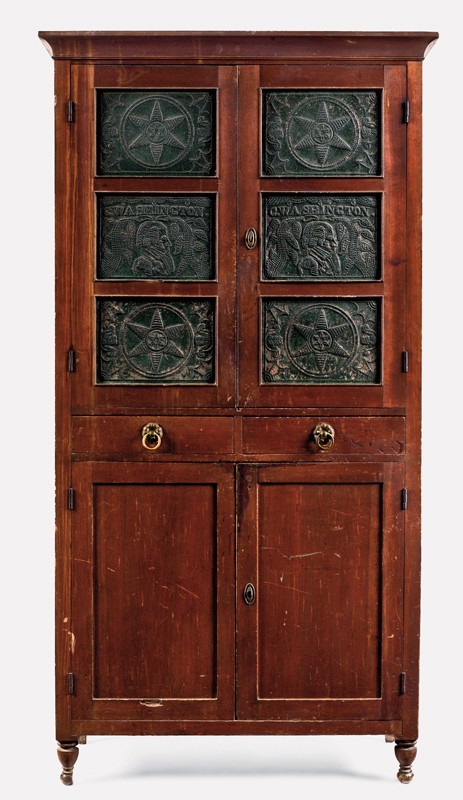
Closet safe attributed to Matthew S. Kahle (1800–1869) and John Henson (act. 1819–after 1831), Lexington, Virginia, 1829. Tulip poplar with white pine; tinned sheet metal. H. 83 1/4", W. 41 1/2", D. 20 1/4". (Private collection; photo, Gavin Ashworth.)
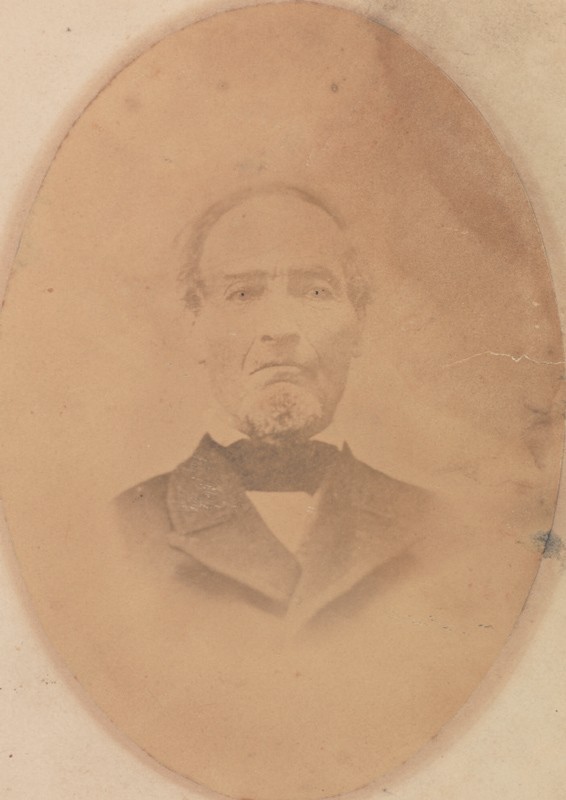
Photograph of Matthew S. Kahle by Michael Miley (1841–1918), Rockbridge County, Virginia, ca. 1868. Albumen print on card. (Courtesy, Virginia Historical Society.) Miley operated his photography studio just north of Kahle’s shop on Main Street in Lexington. Miley is most famous for his photograph of Robert E. Lee on his horse Traveller taken shortly after the end of the Civil War.
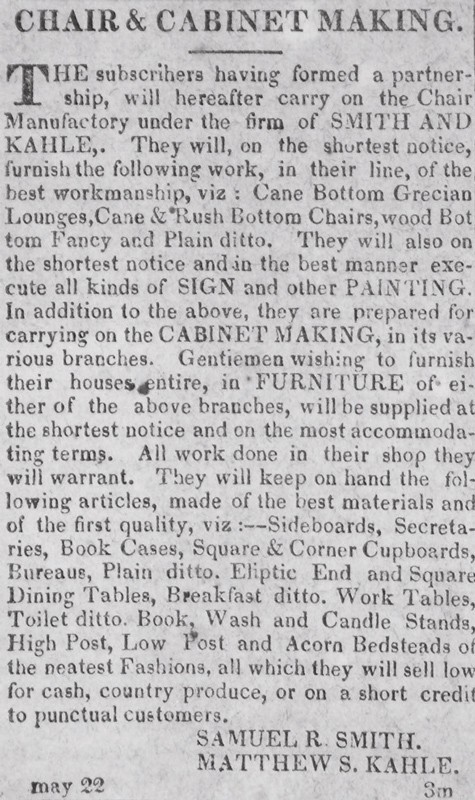
Advertisement of Samuel R. Smith and Matthew S. Kahle, Lexington Intelligencer (Virginia), May 22, 1824. (Courtesy, Albert and Shirley Small Special Collections Library, University of Virginia.) This same advertisement appeared weekly until August 7, 1824.
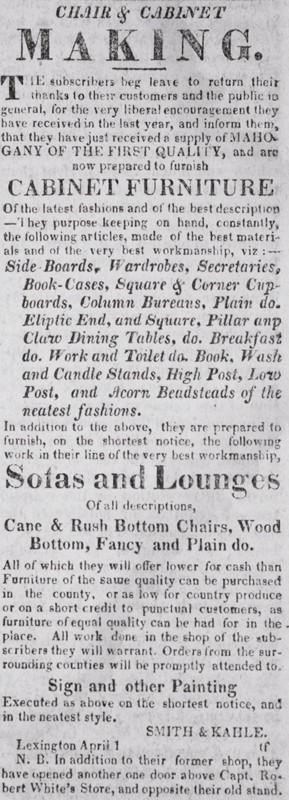
Advertisement of Samuel R. Smith and Matthew S. Kahle, Lexington Intelligencer (Virginia), April 1, 1825. (Courtesy, Albert and Shirley Small Special Collections Library, University of Virginia.)
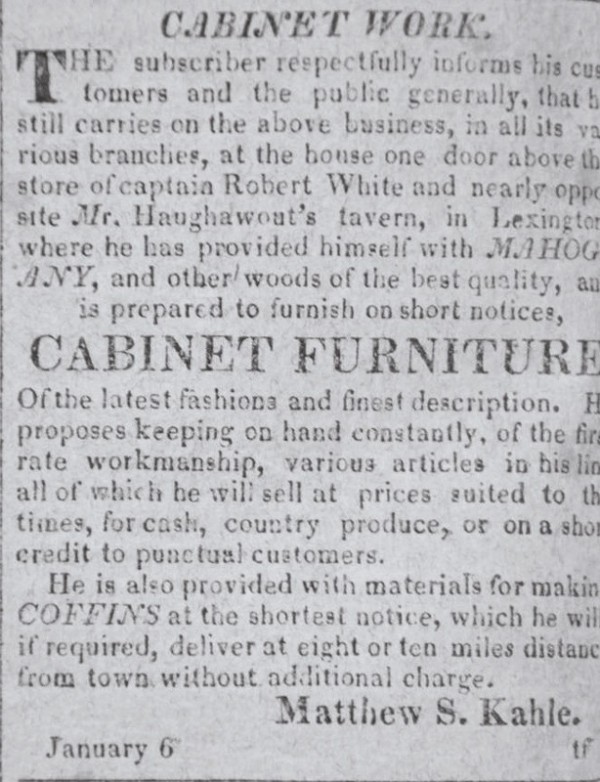
Advertisement of Matthew S. Kahle, Lexington Intelligencer (Virginia), January 6, 1826. (Courtesy, Special Collections, Leyburn Library, Washington and Lee University.)
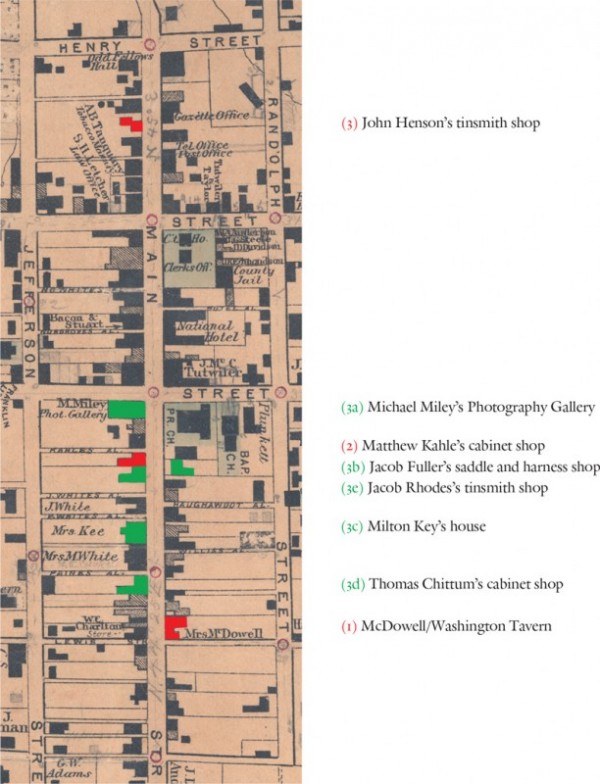
Detail of Gray’s New Map of Lexington, Virginia, O. W. Gray & Son, Philadelphia (location where printed), 1877, showing downtown locations associated with the Kahle-Henson group. (1) McDowell/Washington Tavern, (2) Matthew Kahle’s cabinet shop, (3) John Henson’s tinsmith shop, (3a) Michael Miley’s Photography Gallery, (3b) Jacob Fuller’s saddle and harness shop, (3c) Milton Key’s house and cabinet shop (subsequently operated by Andrew Varner), (3d) Thomas Chittum’s cabinet shop, (3e) Jacob Rhodes’s tinsmith shop.
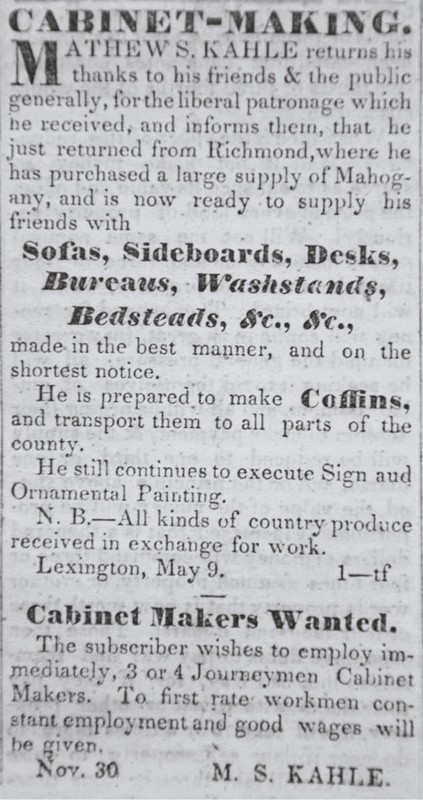
Advertisement of Matthew S. Kahle, Lexington Gazette (Virginia), November 30, 1840. (Courtesy, Special Collections, Leyburn Library, Washington and Lee University.) This is Kahle’s advertisement for three or four journeymen cabinetmakers.
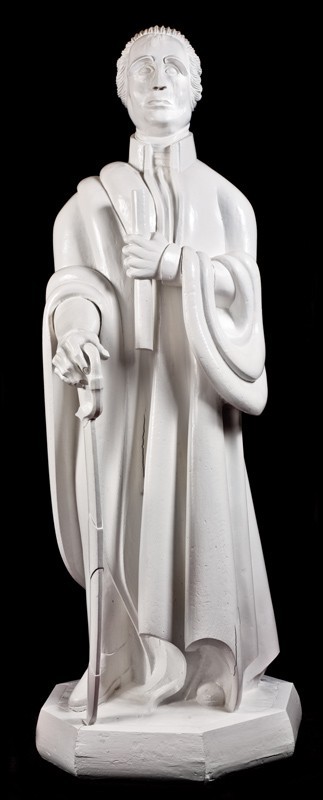
Matthew S. Kahle, George Washington, Lexington, Virginia, ca. 1844. Tulip poplar. H. 98". (Collection of Washington and Lee University; photo, Gavin Ashworth.)
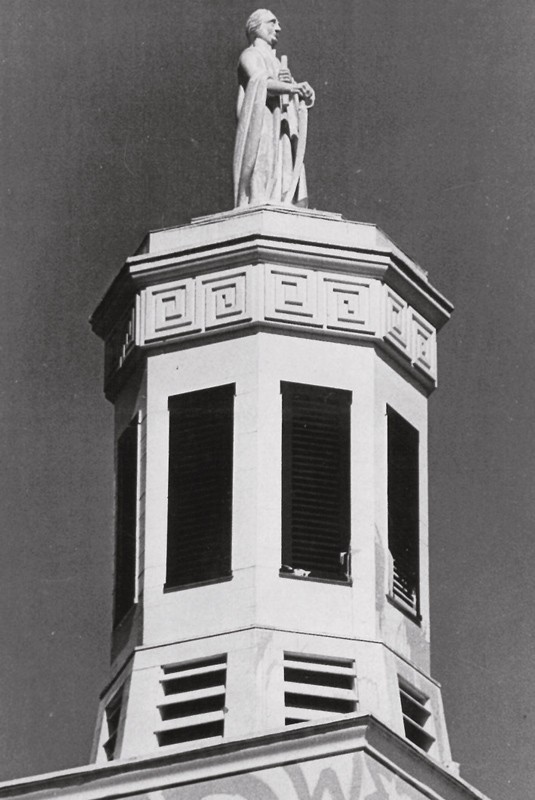
Photograph of the statue illustrated in fig. 9 mounted atop Center Hall, Washington and Lee University, Lexington, Virginia, ca. 1950. (Courtesy, Special Collections, Leyburn Library, Washington and Lee University.)
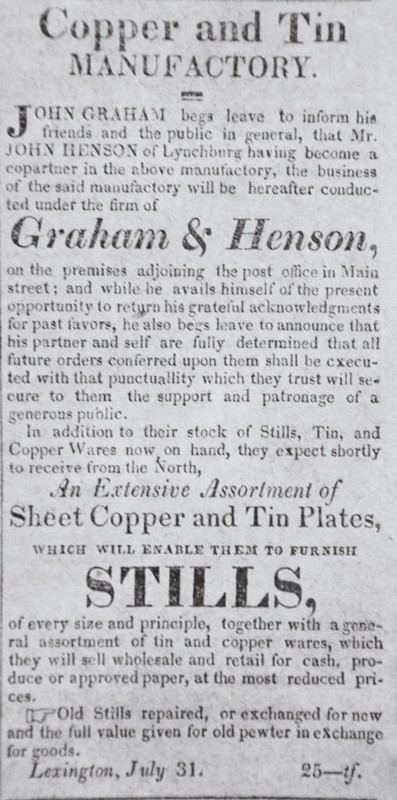
Advertisement of John Graham and John Henson, Lexington Press (Virginia), July 31, 1819. (Courtesy, Special Collections, Leyburn Library, Washington and Lee University.)
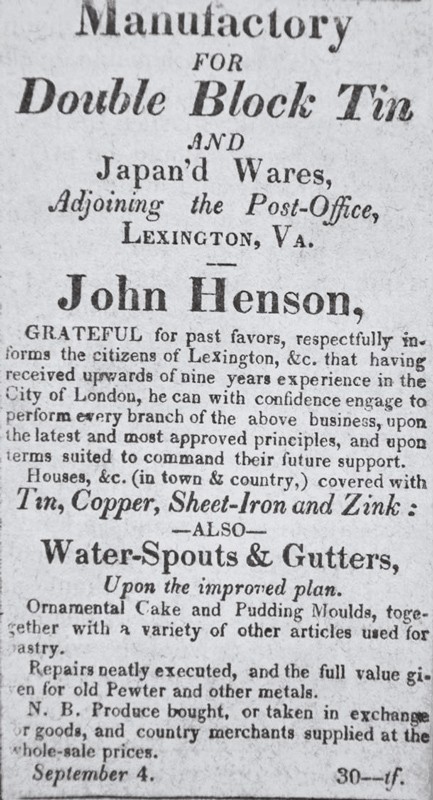
Advertisement of John Henson, Lexington News-Letter (Virginia), September 4, 1819. (Courtesy, Special Collections, Leyburn Library, Washington and Lee University.)
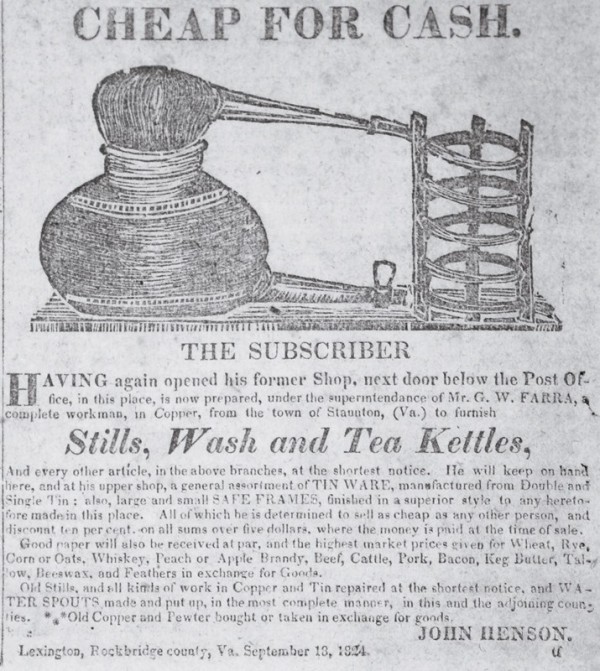
Advertisement of John Henson, Lexington Intelligencer (Virginia), September 18, 1824. (Courtesy, Albert and Shirley Small Special Collections Library, University of Virginia.) This same advertisement appeared weekly until November 27, 1824.
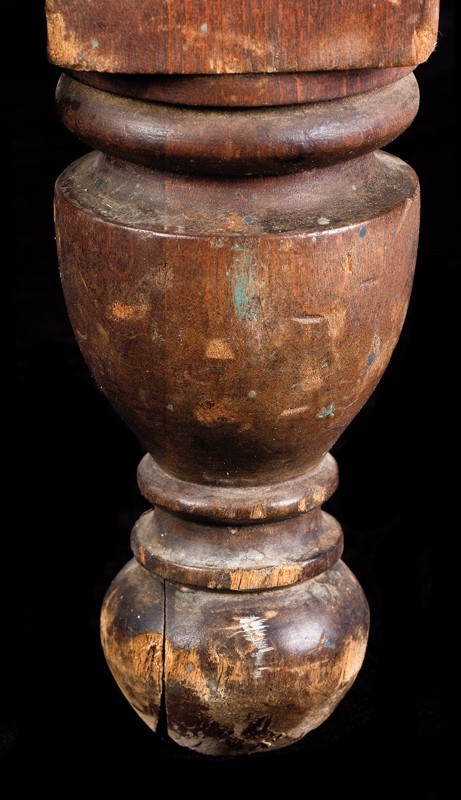
Detail of a rear foot of the closet safe illustrated in fig. 2. (Photo, Gavin Ashworth.) Approximately 1/3 of each foot is a lamination.

Detail of the right side of the closet safe illustrated in fig. 2. (Photo, Gavin Ashworth.)
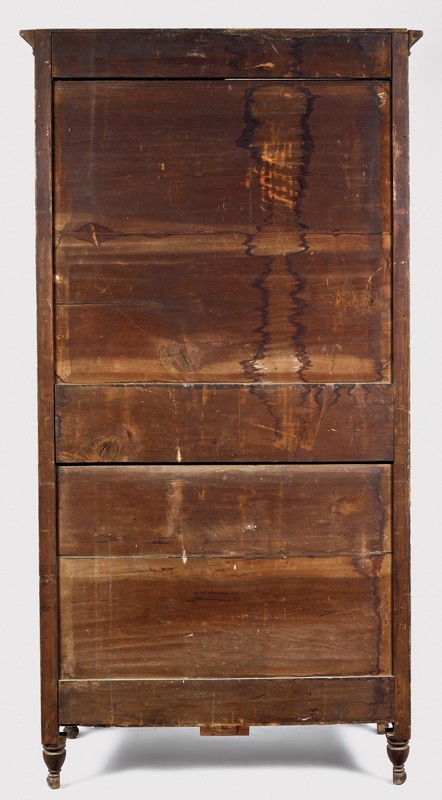
Detail of the back of the closet safe illustrated in fig. 2. (Photo, Gavin Ashworth.)
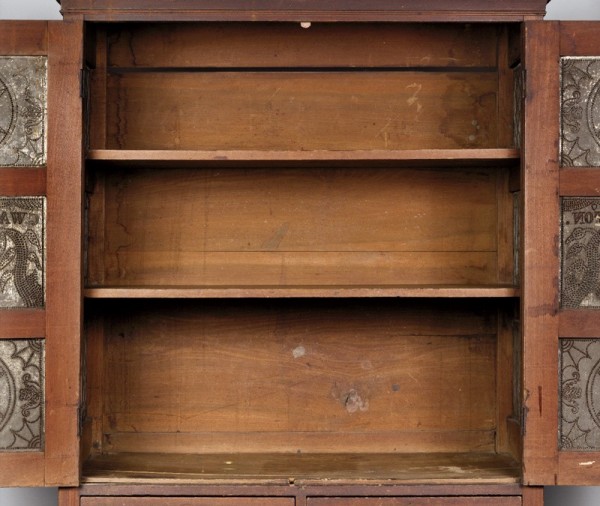
Detail of the interior of the closet safe illustrated in fig. 2. (Photo, Gavin Ashworth.)
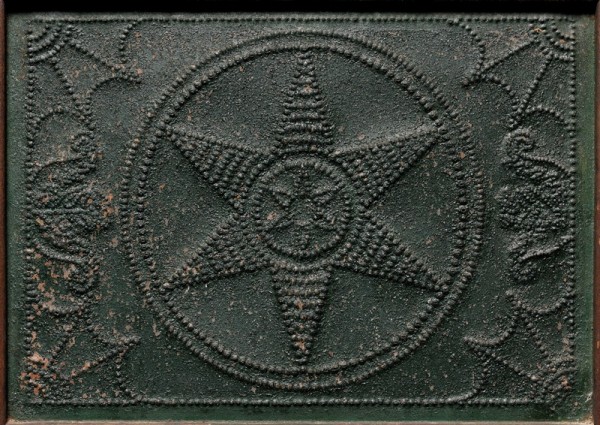
Detail of a tin panel on an upper door of the closet safe illustrated in fig. 2. (Photo, Gavin Ashworth.)
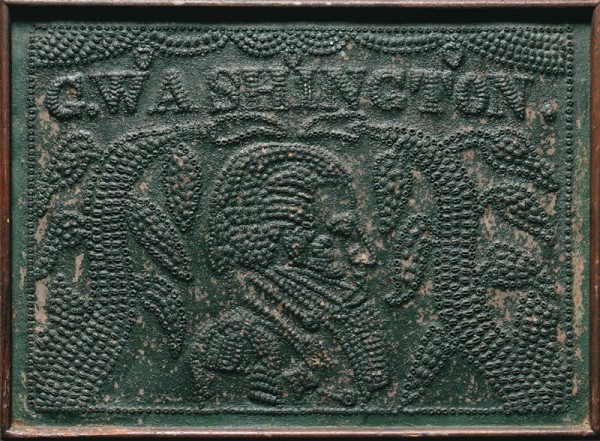
Detail of a tin panel on an upper door of the closet safe illustrated in fig. 2. (Photo, Gavin Ashworth.)
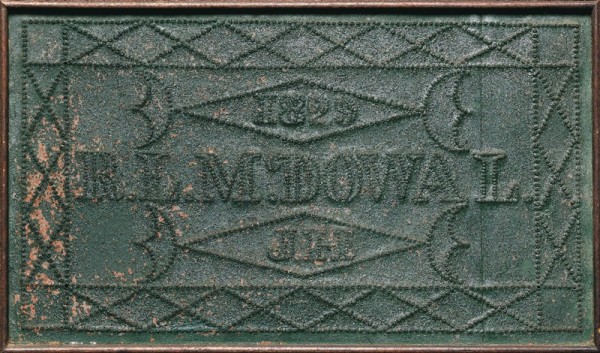
Detail of a tin panel on the right side of the closet safe illustrated in fig. 2. (Photo, Gavin Ashworth.)
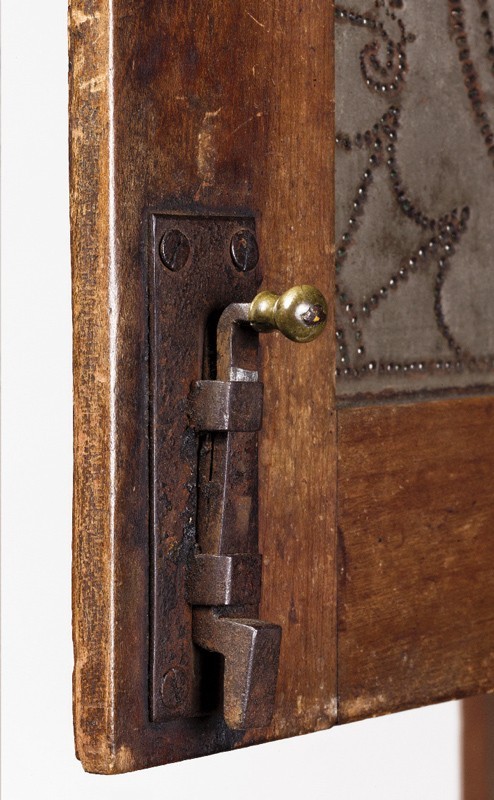
Detail of a latch on the left upper door of the closet safe illustrated in fig. 2. (Photo, Gavin Ashworth.)
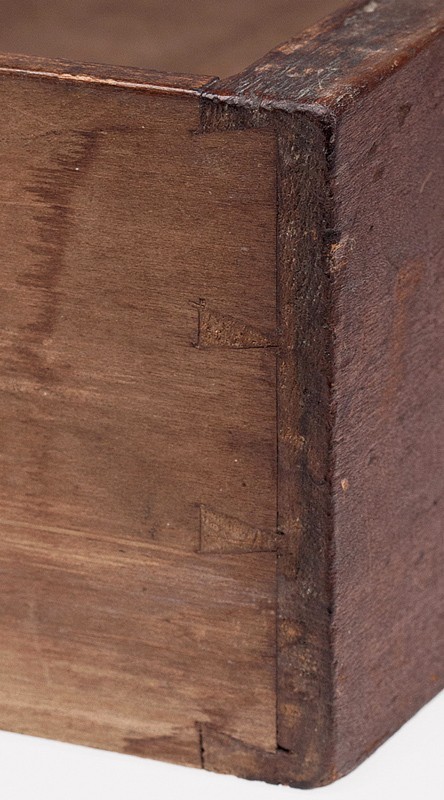
Detail showing the drawer dovetails of the closet safe illustrated in fig. 2. (Photo, William McGuffin.)
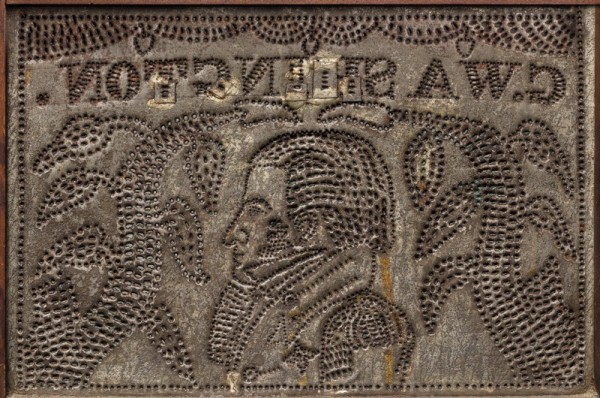
Detail of the interior of a tin panel on the upper door of the closet safe illustrated in fig. 2. (Photo, Gavin Ashworth.)
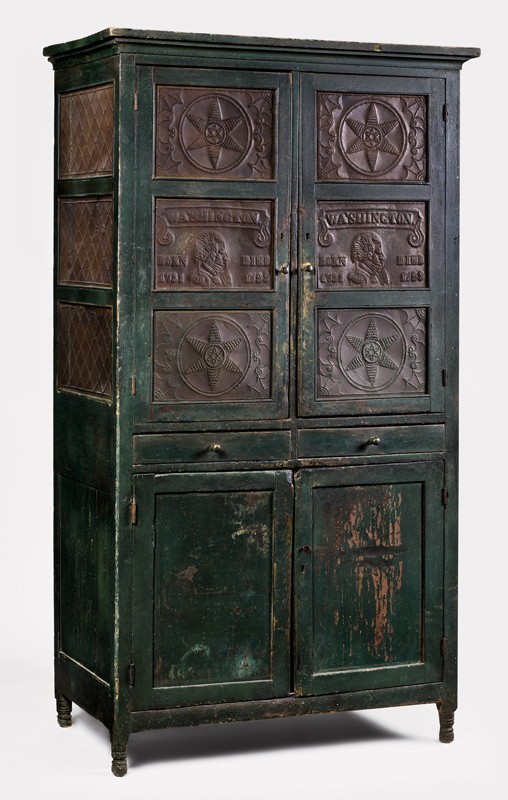
Closet safe attributed to Matthew S. Kahle and John Henson, Lexington, Virginia, ca. 1831. Tulip poplar; tinned sheet metal. H. 74 1/2", W. 38 5/8", D. 20 1/4". (Private collection; photo, Gavin Ashworth.) The drawers are replacements.
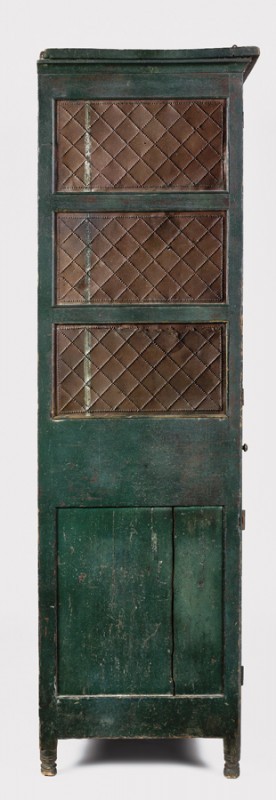
Detail of the left side of the closet safe illustrated in fig. 24. (Photo, Gavin Ashworth.)
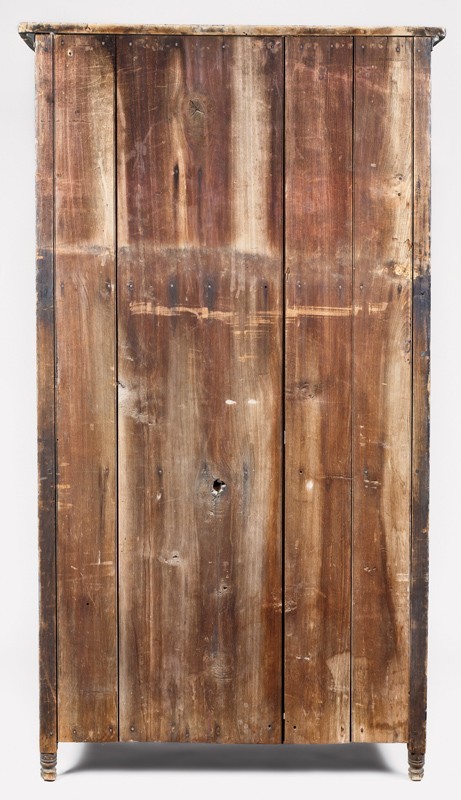
Detail of the back of the closet safe illustrated in fig. 24. (Photo, Gavin Ashworth.)
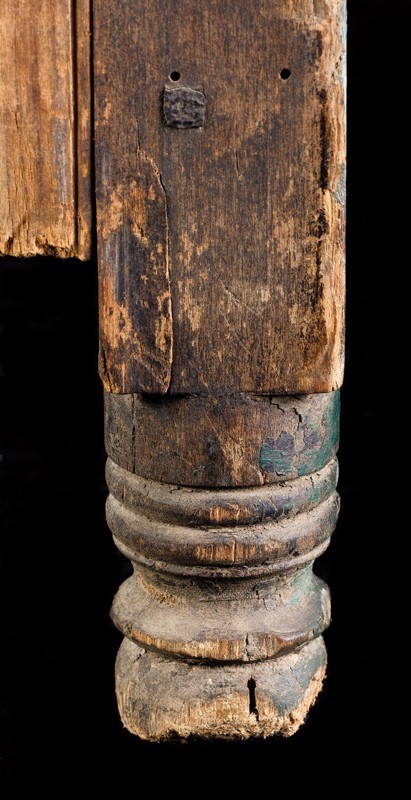
Detail of a foot of the closet safe illustrated in fig. 24. (Photo, Gavin Ashworth.)
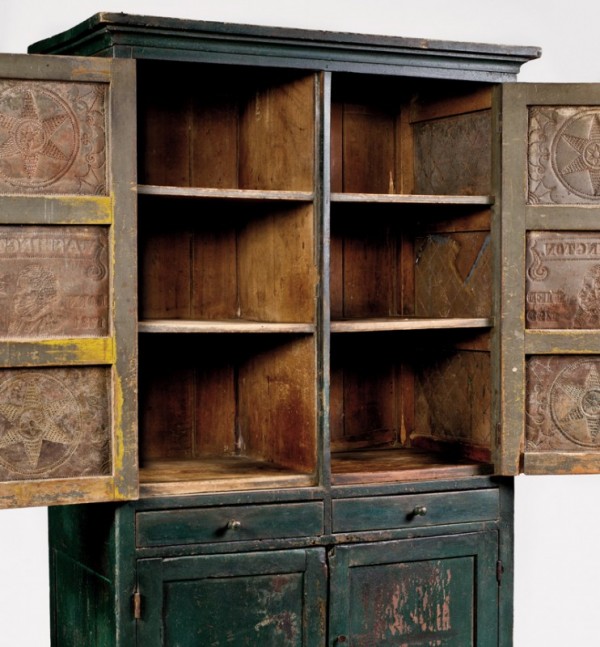
Detail of the interior of the closet safe illustrated in fig. 24. (Photo, Gavin Ashworth.)
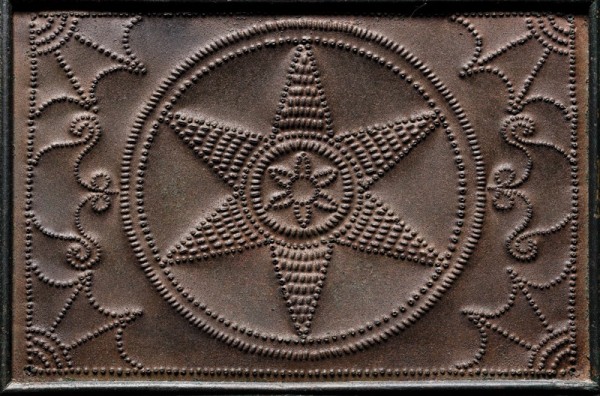
Detail of a tin panel on an upper door of the closet safe illustrated in fig. 24. (Photo, Gavin Ashworth.)
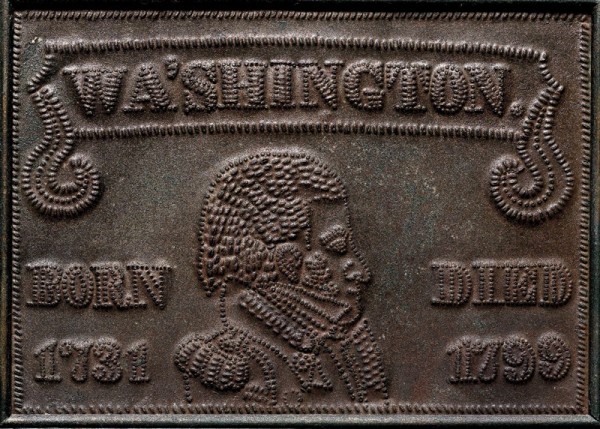
Detail of a tin panel on an upper door of the closet safe illustrated in fig. 24. (Photo, Gavin Ashworth.)
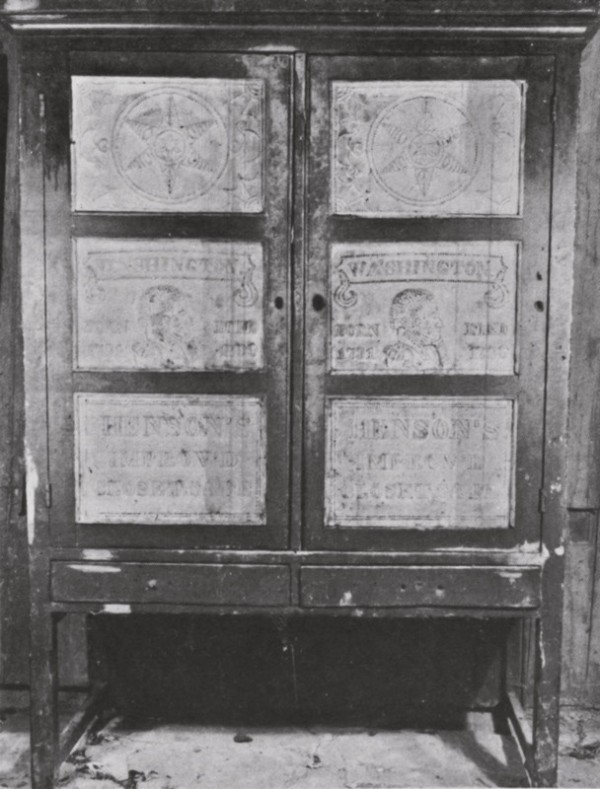
Closet safe fragment attributed to Matthew S. Kahle and John Henson, Lexington, Virginia, ca. 1831. Woods and dimensions not recorded. (Henry J. Kaufman, Early American Ironware [Rutland, Vt.: Charles E. Tuttle Co., 1966], p. 139, pl. 196.) The overhanging top has an applied ovolo molding in place of a cove molding like that on the safe illustrated in figure 24.
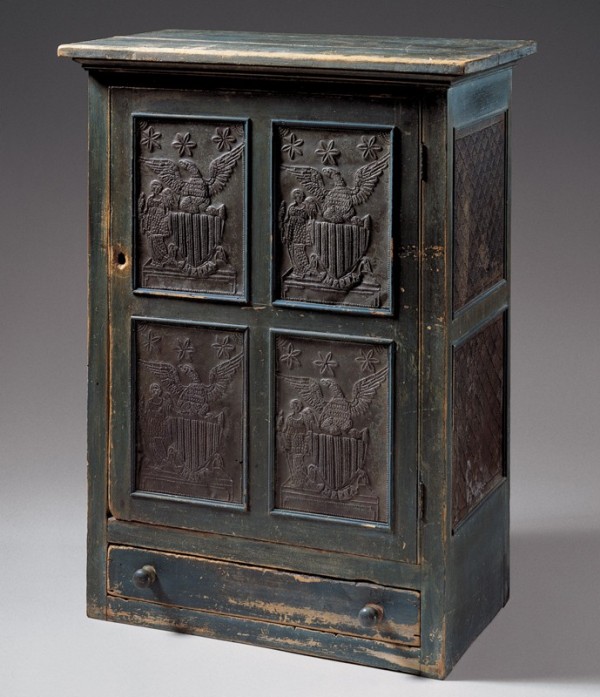
Closet safe fragment attributed to Matthew S. Kahle and John Henson, Lexington, Virginia, ca. 1830. Tulip poplar; tinned sheet metal. H. 44", W. 32 1/4", D. 19". (Sotheby’s, Highly Important Americana from the Stanley Paul Sax Collection, New York, January 16 and 17, 1998, lot 458.)

Photograph of the safe fragment illustrated in fig. 32. (Courtesy, Carole Carpenter Wahler.) This is how the safe appeared when first discovered in a Monterey, Virginia, estate in the early 1970s. The blue paint was original.

Detail of a tin panel on the safe fragment illustrated in figs. 32 and 33. (Courtesy, Carole Carpenter Wahler.)
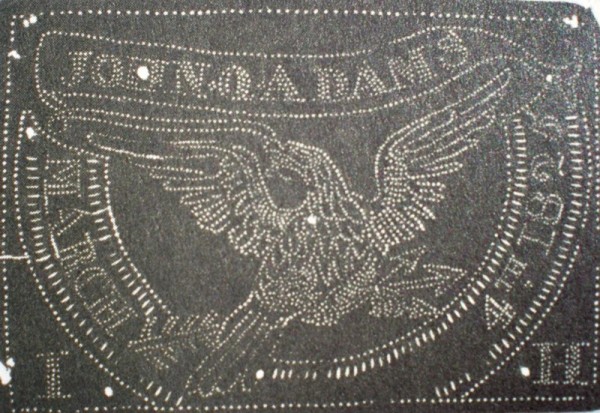
Punched-tin panel attributed to John Henson, Lexington, Virginia, ca. 1825. Tinned sheet metal. 9 3/4" x 13 5/8". (Courtesy, the Collections of The Henry Ford.)
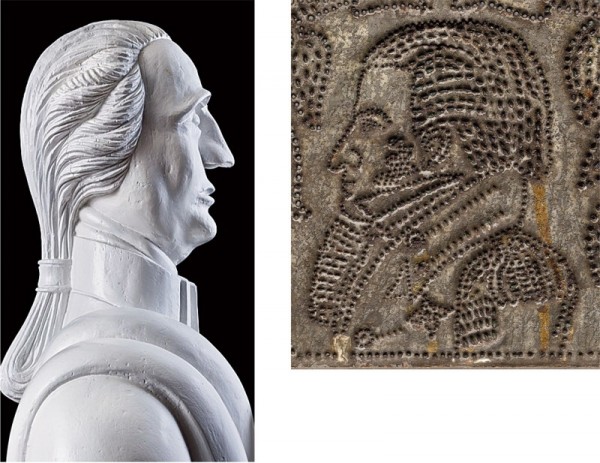
Detail of the sculpture of George Washington illustrated in fig. 9, juxtaposed with facing image of Washington on the punched-tin panel illustrated in fig. 23, a fitting depiction of the Kahle-Henson school. (Photo, Gavin Ashworth.)
